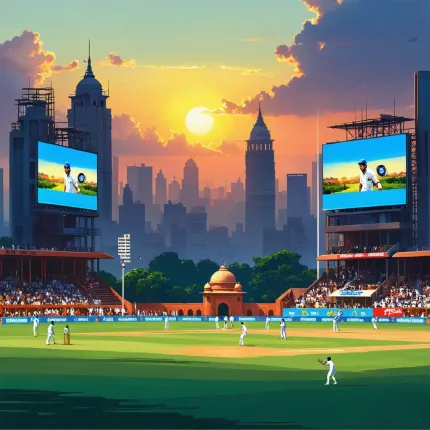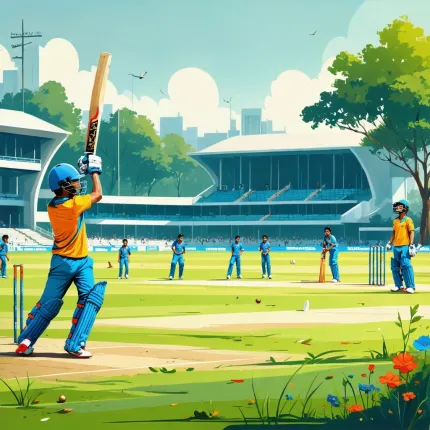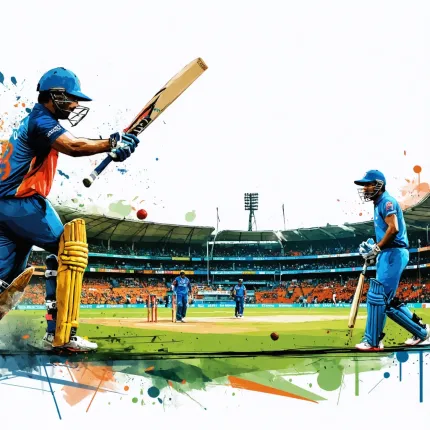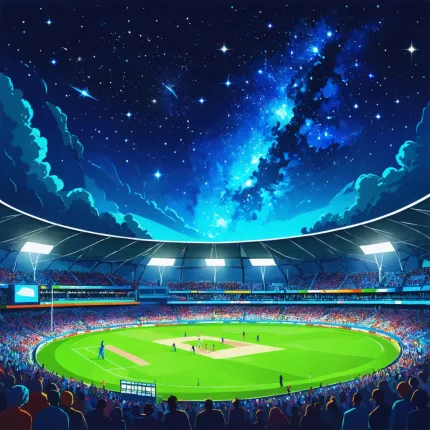Why Cricket Still Rules: More Than Just a Game
Ask any Indian, “Cricket Ka King Kaun Hai?” and you’ll get a passionate answer faster than a bowler’s fastest delivery. Cricket is far more than just runs, wickets, or sixes; it’s woven into the very fabric of Indian society. But what makes cricket not just a sport, but a social phenomenon that shapes values, identities, and even politics in 2025? To understand this, we first need to unravel the layers behind “Cricket Ko Hindi Mein Kya Kahate Hain” — the simple translation is “क्रिकेट,” but the meaning runs much deeper in our collective consciousness. The game has evolved from a colonial pastime to a unifying force, a mirror reflecting India’s diversity and aspirations.
Yet, in a country where cricket is almost a religion, questions arise: Who really is the “Cricket Ka Godfather Kaun Hai” who steered this transformation? Is it about legends on the pitch, administrators behind the scenes, or the millions of fans who live and breathe the game? These questions lead us to a deeper exploration of cricket’s social role today.
The Unseen Threads: Cricket and India’s Social Tapestry
Imagine a bustling street in Mumbai or a quiet village in Rajasthan: cricket unites people who otherwise might never cross paths. It’s a common language, transcending caste, class, and creed. But here’s the catch — with India’s rapid modernization, rising inequalities, and cultural shifts, how does cricket continue to connect rather than divide? And what role does it play in addressing or reflecting social challenges?
Cricket has often been criticized for being an elite sport or just a distraction from pressing issues. Still, its social influence in 2025 tells a different story, one layered with complexity and hope. The game’s rise in digital spaces, grassroots initiatives, and community engagement projects reveal a sport that’s evolving alongside its society, not apart from it.
Cricket Beyond the Boundary: Social Impact in Numbers and Narratives
- Youth Empowerment: Cricket academies in rural India are nurturing talent while promoting education and discipline.
- Gender Equality: With the women’s cricket team gaining unprecedented popularity, traditional gender roles are being challenged.
- Economic Mobility: From local vendors to superstar players, cricket creates livelihood opportunities across social strata.
- Cultural Integration: The IPL and other leagues bring players and fans from diverse backgrounds together, fostering unity.
But how do these social dynamics play out in everyday life? And what stories lie behind the numbers? The answers lie in understanding cricket’s unique position as both a mirror and a maker of India’s social fabric.
What This Article Will Explore
In the sections ahead, we’ll dive deep into the multifaceted influence of cricket in India’s society as of 2025. We'll explore the historical roots behind the titles “Cricket Ka King Kaun Hai” and “Cricket Ka Godfather Kaun Hai,” tracing how leadership on and off the field shaped the game’s social impact. We’ll also decode how “Cricket Ko Hindi Mein Kya Kahate Hain” symbolizes more than just language — it’s about identity and belonging.
More importantly, this post aims to unpack how cricket acts as a social glue, binding together millions across divides, while also highlighting the challenges that come with such a massive cultural institution. From inspiring social change to reflecting societal tensions, cricket’s role in India is as thrilling and unpredictable as a last-over chase.
So, whether you’re a die-hard cricket fan or someone curious about India’s social evolution, buckle up for a compelling journey into how cricket continues to shape, challenge, and celebrate the Indian way of life in 2025.
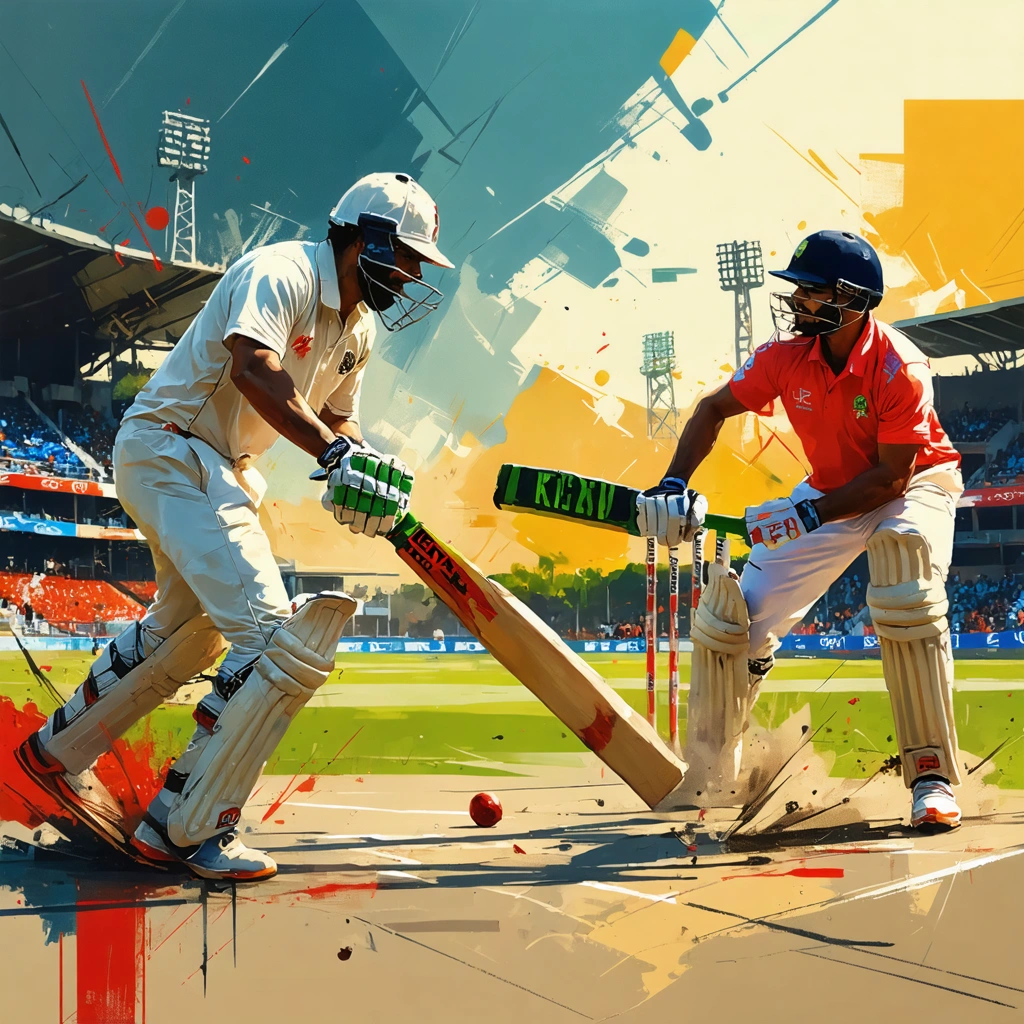
Cricket’s Social Influence: Analyzing Cricket’s Role in Shaping India’s Social Fabric in 2025
Cricket, often referred to as a religion in India, holds an unparalleled position in the country’s social and cultural landscape. In 2025, its impact continues to shape India’s social fabric in profound ways. Understanding this influence requires exploring not only the sport’s popularity but also its role in fostering unity, identity, and social change across diverse communities.
Why Is Cricket So Integral to India’s Social Fabric?
At its core, cricket in India is much more than a game; it’s a unifying force that transcends language, religion, caste, and economic status. Millions of Indians passionately follow cricket, making it a shared cultural experience that bridges societal divides. The sport’s ability to bring together people from all walks of life during international tournaments or domestic leagues like the IPL is unmatched.
This phenomenon can be linked to how cricket has evolved in India:
- Historical Legacy: Since the British colonial era, cricket has grown into a symbol of national pride and post-independence identity.
- Massive Media Coverage: Television and digital platforms have made cricket accessible to remote areas, creating a collective viewing experience.
- Role Models and Icons: Cricketers are often seen as heroes and agents of social change.
Cricket Ka King Kaun Hai? Understanding the Icons Behind the Sport
The phrase “Cricket Ka King Kaun Hai” (Who is the king of cricket?) is frequently asked by fans eager to identify the greatest player or the most influential figure in Indian cricket. Historically, legends like Sachin Tendulkar have been crowned as the king due to their unmatched skill, dedication, and impact both on and off the field.
In 2025, the debate continues, with new stars emerging from the younger generation. Factors influencing this perception include:
- Performance Consistency: Players like Virat Kohli and Rohit Sharma have set new benchmarks.
- Leadership Qualities: Captains who inspire and unite teams gain immense respect.
- Social Engagement: Cricketers active in philanthropy and social issues often gain a special place in public affection.
Thus, the title of “Cricket Ka King” is dynamic and reflects both on-field excellence and social resonance.
Cricket Ko Hindi Mein Kya Kahate Hain? The Language and Cultural Connection
The question “Cricket Ko Hindi Mein Kya Kahate Hain” translates to “What is cricket called in Hindi?” The answer is straightforward: cricket is called “क्रिकेट” (Cricket) in Hindi as well, a borrowed word from English, illustrating the sport’s colonial origins and its seamless integration into Indian culture.
This linguistic adoption signifies more than just a name; it reflects how cricket has become a part of everyday conversations across linguistic groups in India. The sport’s terminology and phrases have been localized in Hindi and other regional languages, making it more relatable and accessible to millions.
Who Is the Cricket Ka Godfather Kaun Hai? Understanding the Pioneers of Indian Cricket
Another popular query is “Cricket Ka Godfather Kaun Hai” or “Who is the godfather of cricket?” This question seeks to identify foundational figures who have profoundly influenced Indian cricket’s development.
Two key figures often emerge in this context:
- CK Nayudu: India’s first Test captain, who laid the groundwork for organized cricket in the country.
- Raj Singh Dungarpur: A visionary administrator who helped shape the modern domestic cricket structure.
The title “Cricket Ka Godfather” is symbolic of those who nurtured the sport’s growth, facilitated infrastructure development, and helped India rise to cricketing prominence globally.
How Cricket Shapes Social Dynamics and National Identity
Cricket’s influence on India’s social fabric manifests in several critical areas:
- Promoting National Unity: International matches, especially against traditional rivals, evoke strong nationalistic feelings that unite people across regional and linguistic divides.
- Social Mobility: Cricket offers opportunities to talented youth from underprivileged backgrounds to achieve fame and economic success.
- Gender Empowerment: The rise of women’s cricket in India challenges traditional gender roles and inspires social change.
- Community Engagement: Cricket tournaments often bring communities together, encouraging social interaction and cohesion.
Case Studies: Cricket as a Catalyst for Social Change in 2025
Recent examples from 2025 illustrate cricket’s ongoing social impact:
- Grassroots Programs: Initiatives like “Cricket for All” have increased participation among rural girls, promoting gender equality.
- IPL’s Social Campaigns: The Indian Premier League has partnered with NGOs to raise awareness on mental health, environmental sustainability, and education.
- Diversity in Team Composition: Players from tribal and marginalized communities have gained national recognition, challenging social hierarchies.
Conclusion: The Enduring Legacy of Cricket in India’s Social Fabric
In 2025, cricket remains a powerful social phenomenon in India, shaping identities, fostering unity, and driving progressive social narratives. Questions like Cricket Ka King Kaun Hai, Cricket Ko Hindi Mein Kya Kahate Hain, and Cricket Ka Godfather Kaun Hai reflect the deep cultural engagement with the sport and highlight cricket’s multifaceted role in Indian society.
By continuing to evolve inclusively and socially consciously, cricket will undoubtedly remain a cornerstone of India’s social fabric for decades to come.
